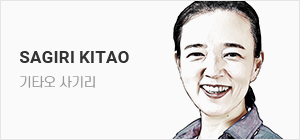이 기사는 해외 석학 기고글 플랫폼 '헤럴드 인사이트 컬렉션'에 게재된 기사입니다.
 |
| 서울 명동 거리 |

프랑스의 수학자이자 철학자 겸 사회학자인 오귀스트 콩트는 ‘인구구조는 운명’이라는 말을 처음 쓴 사람이다. 이 문구는 인구 수와 그 인구의 구성 변화는 사회에 중대하고 장기적 영향을 미친다는 뜻이다. 한 번 인구구조에 변화가 발생하면, 그 사회의 미래는 정해지기 때문에 인구구조는 운명이라는 것이다.
한국은 과거부터 현재까지 국가의 미래에 지대한 영향을 미치는 일련의 인구구조적 변화를 겪는 중이다. 첫째, 한국은 여성 1명당 출생아 수가 0.78명으로 전세계 모든 국가 중 단연코 가장 낮은 출생률을 기록하고 있다. 현재 한국 외에 출생률이 1.0에 못 미치는 국가는 어디에도 없다. 대만이 1.0, 싱가포르가 1.1, 중국이 1.2로, 일부 국가가 근접하긴 하지만 출생률이 1.0 미만인 나라는 오직 한국 뿐이다.
둘째, 지금 한국에서는 사망건수가 출생건수를 앞지른다. 한국 통계청의 보고에 따르면 2020년 한국은 사망건수가 출생건수보다 3만2600건 더 많았으며, 2021년에는 5만7100건, 2022년에는 12만3800건 더 많았고, 이 추세가 앞으로도 이어질 전망이라고 한다.
셋째, 1980년부터 2010년까지 30년 간 남아가 여아보다 70만~80만명 더 많이 태어났다. 이 남아들은 결혼 적령기가 됐을 때 한국인 여성 배우자를 찾을 수가 없다.
넷째, 현재 한국 거주자 중 외국 출생자가 차지하는 비율은 단 4% 정도로 다른 나라들, 가령 미국의 15%, 독일의 19%보다 현저히 낮다. 이러한 인구구조적 패턴과 변화는 이미 발생했으며 한국의 인구구조적 운명을 좌우할 것이다. 구체적으로 보면, 지금부터 앞으로 수십년간 한국의 전체 인구 수는 현저히 감소하고 노인 인구는 극적으로 증가할 것이다.
한국의 이런 인구구조적 변화의 주요 원인은 1960년대 이후의 급속한 출생률 변화다. 가파른 출생률 감소로 미래에 한국의 규모는 훨씬 작아질 것이며, 엄청나게 큰 수를 차지하는 고령층이 생산인구에 큰 부양 부담으로 작용할 것이다.
2023년 한국 인구는 5180만명으로 추산되는데, 이 중 25% 정도가 노인(60세 이상)이다. 2100년까지 한국의 인구 수는 2023년 현재의 절반이 안 되는 약 3200만명으로 예측되며, 고령 인구가 그 중 반 이상을 차지할 것이다. 즉 지금부터 2100년까지 고령 인구가 두배로 증가한다는 뜻이다.
1960년대 초 한국의 출생률은 여성 1명당 출생아 6명 이상이었다. 2023년 출생률은 0.78명이다.(다음 세대에 인구를 대체하기 위해서는 출생률이 여성 1명당 2.1명이어야 함을 기억하자) 이는 인구학 역사상 가장 성공적인 출생률 감소 사례의 하나였다. 이런 빠른 감소는 가히 충격적이며 2100년 대한민국 인구의 절반 이상이 노인이 되는 핵심 원인이다.
유엔 2022년 세계인구전망 보고서에는 지금부터 2100년까지 한국의 인구 예측이 제시돼 있다. 이 예측은 유엔의 중위출생률 시나리오를 바탕으로 한다. 이 시나리오는 예측 기간 중 첫 10년 정도 한국의 출생률이 한국에서 관측된 인구학적 추세를 따르며, 이후에는 매 5년마다 여성 1명당 출생아 수가 0.05명씩 선형적으로 증가한다고 가정한다. 한국의 2023년 출생률이 너무 낮은 탓에 2100년까지 한국은 여성 1명당 1.8명 수준에 겨우 도달할 것으로 추정되는데, 이는 매우 낮은 수치지만 현재 출생률인 0.78보다는 높다.

한국의 1960년 인구 피라미드를 살펴보자.〈그래프1 참조〉 인구 피라미드란 맨 아래(0~4세)에서부터 맨 위(95세 이상)까지 5년 단위의 연령그룹을 수직으로 성별을 구분해 정렬한 인구 데이터 그래프다. 피라미드의 가로선(맨 아래)은 인구 규모를 나타내며 연령-성별 그룹의 실제 인구수로 눈금을 매긴다.
1960년, 한국의 전체 인구수는 2580만명이 넘으며 남성이 절반을 약간 넘고 여성이 절반에 약간 못 미친다. 인구의 약 27%가 남아(0~19세), 25%가 여아다. 노인 인구(60세 이상)의 경우 남성이 2%, 여성이 3%다.
그럼 이제 현재로 돌아와서 2023년의 인구 피라미드를 살펴보자.〈그래프2 참조〉 유엔의 추산에 따르면 한국의 현재 인구는 약 5180만명이고 남성과 여성이 각각 절반을 차지한다. 그러나 아동의 수는 1960년 이후 극단적으로 감소해 현재는 남아와 여아 모두 각각 인구의 8%를 차지한다. 따라서 한국 인구에서 아동이 차지하는 비율은 1960년에 52%였던 데 반해 현재는 16%다. 반대로 노인 남성은 2%에서 12%로, 노인 여성은 3%에서 14%로 증가했다. 지금 한국 인구의 4분의 1 이상이 노인인 것이다. 노인 인구가 인구의 5%에 불과했던 1960년에는 고령층에 대한 서비스 제공이 전혀 문제가 되지 않았지만 현재 그들은 인구의 25% 이상을 차지한다.
2100년 한국의 인구구조는 어떤 모습일까. 앞서 언급했듯이, 유엔은 한국의 출생률이 소폭 상승한다고 가정하고 2100년까지 한국의 인구를 예측했다. 다른 사회적·인구구조적 추세는 현재와 비슷한 수준을 유지한다고 봤다. 지금부터 2100년까지 한국으로 유입되는 이민자 수의 증가는 없을 것이라고 예상했으며, 2023년 현재 한국 내 이민자 비율은 전체 인구의 약 4% 정도로 추정된다.
2100년 한국의 인구 피라미드〈그래프3 참조〉를 보면 전체 인구가 3200만명 남짓으로, 2023년보다 거의 45% 줄어든다. 남성이 절반을 약간 넘고, 여성이 절반을 약간 밑돈다. 2100년, 한국의 아동 비율은 인구의 약 12%로, 남아와 여아가 각각 6%일 것으로 예측된다. 2100년에 12%인 이 예측값은 2023년 인구 대비 아동 비율인 16%에서 하락한 것이다.
노인 인구를 살펴보면, 2100년 인구에서 노인이 차지하는 비율은 큰 폭으로 상승할 것으로 예측된다. 2100년, 한국 전체 인구의 49% 이상이 노인일 것으로 추정되는데, 이는 2023년의 25%, 그리고 극히 낮았던 1960년의 5%와 대비된다. 인구 중 노인이 많더라도 동시에 생산 인구 역시 그만큼 많다면 전혀 문제가 되지 않는다. 대부분의 사회·경제적, 혹은 기타 관련 문제들은 생산자 대비 노인의 비율이 높을 때만 발생한다.
인구의 노년부양비(old age dependency ratio)는 15~59세 대비 60세 이상의 비율을 뜻한다. 분자인 60세 이상 인구는 일반적으로 미고용 상태로, 따라서 상품, 중요 자원, 자양물의 적극적인 생산자 역할을 하지 않는 사람들로 구성된다. 분모인 15~59세는 상당수가 다양한 방식으로 식량, 관련 상품 및 서비스를 생산하는 노동인구로 이뤄져 있다. 이 비율에 100을 곱하면 생산자 100명 당 피부양 노인의 수가 된다.
1960년, 한국에는 생산자가 노인보다 훨씬 많았다. 당시 한국의 노년부양비는 꽤 평범한 23.1이었다. 다시 말해 생산 연령 인구(15~59세) 100명 당 피부양 노인(60세 이상)이 23명이었다는 말이다. 노년부양비는 2023년까지 약 두배 증가해, 현재 생산자 100명당 43명에 가깝다. 그러나 2100년이면 노년부양비는 극도로 높아져 생산자 100명당 117명이 될 것으로 예측된다. 도3을 보면 2100년 한국은 인구구조적으로 역피라미드의 모습을 띨 것임을 확인할 수 있다.
2100년까지 한국은 노인부양부담이 아주 높고 인구구조적으로 극히 고령화된 사회가 될 것으로 추정된다. 2100년, 한국에서는 생산자 100명당 피부양 노인이 117명에 이를 것으로 보인다. 반면 미국은 2100년 피부양 노인이 생산자 100명당 71명으로 예상된다.
한국의 노인부양부담 증가가 지닌 중요한 함의는 바로 고령 부모의 부양과 관련이 있다. 전통적으로 한국에서 고령 부모의 부양은 아들의 몫이었다. 과거에는, 그리고 정도는 줄어들었지만 지금까지도 부모는 대개 장남과 함께 살았으며 다른 아들들도 함께 혹은 가까이 거주했다. 장남과 그의 형제들이 부모에게 경제적 지원을 제공하는 책임을 지곤 했다. 부모에 대한 정서적 지원에 있어서는 아들이 여자형제, 그리고 때로는 배우자, 즉 부모의 며느리에게 도움을 받기도 한다. 이런 규범은 지난 몇 십년간, 구체적으로는 1960년대 이후로 변화해 왔으며 특히 서울, 부산, 대구 등 대도시 거주자들을 중심으로 변화가 더 두드러졌다. 그러나 부모에 대한 경제적, 정서적 지원이 큰 부담이 된 적은 거의 없었다. 출생률이 적당히 높은 인구에서는 예상할 수 있듯이 생산자가 항상 피부양 노인보다 훨씬 많았기 때문이다.
그러나 현대 한국의 극히 낮은 출생률을 감안하면, 노인돌봄은 앞으로 남은 21세기 동안, 그리고 특히 2100년 이후 분명 문제가 될 것이다. 앞서 다뤘던 것처럼 앞으로 한국에서 생산자 당 피부양 노인은 지금보다 더 많아질 것이기 때문이다. 노인부양부담은 현재 생산자 100명당 피부양 노인 43명이며, 2100년에는 생산자 100명당 117명이 될 것으로 예측된다. 한국은 현재, 그리고 2100년까지는 분명히 아시아, 그리고 심지어 전세계에서 노년부양비가 가장 높은 국가 중 하나가 될 것이다. 앞으로 다가올 금세기 수십년간 이 초고도 노년부양비가 1980년부터 2100년까지 한국에서 발생한 비정상적으로 높은 성비와 결합된다면, 한국의 노인돌봄 문제는 훨씬 더 심각해진다.
물론 한국의 비정상적 출생성비는 다시 정상 수준으로 회복됐지만, 앞서 언급했던 대로 한국에서는 이미 장래에 결혼 상대자를 찾기가 불가능하지는 않더라도 힘들어질 남아가 너무 많이 태어난 상황이다. 한국에서는 결혼 연령에 도달했을 때 한국인 여성 배우자를 찾을 수 없는 남아 수가 70만~80만명 정도인 것으로 추산된다.
생산자당 피부양 노인도 더 많아지고, 게다가 배우자가 없는 남성 생산자가 최대 70만~80만명에 이를 것이다. 이 미혼 남성 중 일부는 부모에게 경제적, 정서적 지원을 모두 제공해야 할 것이다. 그런 상황은 사회적, 정신적 건강에 어떤 의미가 있을까. 인류학 연구에서 가능성 있는 답을 찾을 수 있다.
인류학자 낸시 쉐퍼 휴즈에 따르면 아일랜드 농촌에서는 막내 아들이 부모와 머물며 가족 농장을 책임지고 나이든 부모를 보살필 책임을 진다. 그의 형들은 대개 도시로 이사하거나, 외국으로 이민을 가거나 사제가 된다. 그의 여자형제들은 결혼을 하면 집을 떠난다. 막내 아들은 이미 성별과 출생 순서에서 가족 소유지를 돌보고 부모를 부양해야 할 운명을 타고 난 것이다. 이것은 사회에서 남성 상속자를 선택하는 하나의 경제적 전략으로, 한국에서도 드물지 않다.
그러나 아일랜드 농촌의 경우, 가족이 마지막에 태어난 남성을 희생양으로 삼는 심리적 전략이 포함돼 있다. 막내 아들은 아주 어릴 때부터 자신은 부모가 사망할 때까지 영원히 부모와 집에 남을 것임을 깨닫는다. 이런 사회적 지위에 처한 남성들은 형제자매에 비해 알콜중독에 빠지거나 정신질환, 특히 조현병을 앓을 가능성이 훨씬 높다.
한국은 앞으로 수십년간 나이든 부모를 경제적, 정서적으로 모두 보살펴야 하는 미혼 아들의 수가 엄청나게 많아질 것이다. 만약 아일랜드 시골의 상황이 한국에도 어떤 의미가 있다면, 이런 한국인 남성 중 상당수, 특히 미혼 남성에게서 정신질환 발병률이 더 높아질 것임을 예상할 수 있다.
한국이 이런 인구구조적 운명에 얽힌 심각한 문제를 변화시킬 방법은 없을까. 결혼 이주가 하나의 해결책일 수도 있다. 하나는 200만 명에 달하는 조선족이 살고 있는 중국 북동부 지역에서 조선족 여성이 한국으로 이민을 오는 것이다. 또 하나는 결혼 연령의 북한 여성이 한국으로 이주해 오는 것이다. 또 다른 가능성은 베트남, 필리핀, 일부 동유럽 국가 등 소득이 상대적으로 더 낮은 국가의 외국인 여성이 한국으로 이민해 오는 것이다. 이런 전략들은 물론 한국의 여성 배우자 풀을 확대시키겠지만 그들의 출신지역 결혼 시장에서는 불균형을 초래할 것이다.
지금까지 출생률이 극히 높았던 1960년대부터 현저히 낮은 현재, 그리고 미래까지 한국의 출생률 추이를 알아보았다. 단 몇십년만에 대체출산율에 훨씬 못 미치는 수준으로 감소한 한국의 출생률은 전례없는 수준의 고령 인구 증가를 초래했고, 이 현상은 앞으로도 지속될 것이다. 21세기의 수십년 간, 한국 생산 인구에게는 점점 더 많은 노인부양부담이 가중될 것이다. 이 부담은 21세기 후반으로 갈수록 더 심각해 질 것이다. 한국의 정책 리더들은 오늘날과 미래의 높은 고령인구 수를 이미 인식하고 있다. 이 문제와 이것의 함의는 지금까지보다 훨씬 더 많은 관심을 요한다.
더들리 포스턴 미 텍사스 A&M대 명예교수
South Korea‘s Demographic Destiny: Smaller and Older
Dudley L. Poston, Jr.
Auguste Comte, the French mathematician, philosopher, and sociologist is the first person to write that, “Demography is destiny.” This phrase means that population numbers and the changing composition of their members have important and lasting impacts on society. Demography is destiny because once the demographic shifts and changes have occurred, the future of the society is set.
South Korea (hereafter Korea) has experienced, and is still experiencing, a series of demographic shifts and changes that are having and will continue to have important impacts on the country‘s future. One, Korea has by far the lowest fertility rate of all the countries of the world, a rate of 0.78 children per woman; no other countries today have fertility rates lower than 1.0; several are close, e.g., Taiwan at 1.0, Singapore at 1.1, and China at 1.2. But only Korea has a fertility rate under 1.0.
Two, the country is now having more deaths each year than births; the Korean Statistical Office reported that the country had 32.6 thousand more deaths than births in 2020, 57.1 thousand more deaths than births in 2021, and 123.8 thousand more deaths than births in 2022; and this trend is expected to continue into the future. Three, in the thirty-year period between 1980 and 2010, there were between 700,000 to 800,000 extra boys born in Korea who when they reach marriage age will not be able to find Korean women to marry. And four, Korea now has only around 4 percent of its residents who were born in another country, a percentage well below that of other countries, e.g., the U.S. at 15 percent and Germany at 19 percent. These demographic patterns and shifts have already occurred and will result in Korea‘s demographic destiny. Specifically, starting now and continuing into the decades ahead, Korea will decline considerably in total population size and will increase dramatically in its numbers of elderly.
A major factor responsible for Korea‘s above demographic shifts is the rapid fertility transition experienced since the 1960s. Because of its dramatic fertility decline, in the future the country will be much smaller in size, and its very large numbers of elderly will create a heavy dependency burden on the producing population.
In the year of 2023, Korea had an estimated population size of over 51.8 million persons, and its elderly population (persons of age 60 and over) comprised just over 25 percent of the population. By the year of 2100, Korea is projected to have a population size of just over 32 million persons, less than half of its size in 2023, and its elderly population will comprise more than half of the country; this means there will be a doubling of the percentage of elderly between now and 2100.
In the early 1960s Korea had a fertility rate above 6.0 children per woman; in 2023 its rate was 0.78 (remember that a country needs a fertility rate of 2.1 children per woman to replace the population in the next generation). This was one of the most successful fertility declines in demographic history. This rapid decline is striking and is a key for why elders will comprise over half of the country‘s population in 2100.
The population projections of Korea between now and the year 2100 are from the United Nations World Population Prospects 2022. The projections are based on the UN medium fertility scenario. This scenario assumes that the fertility rate in Korea over the first 10 years or so of the projection period will follow the country‘s observed demographic trends; thereafter, fertility is assumed to increase linearly at a rate of 0.05 children per woman every 5 years. Since Korea’s fertility rate was so low in 2023 that by 2100 the country is assumed to just about reach a level of 1.8 children per woman, a very low projected rate, but a rate higher than its present rate of 0.78.
We have prepared a population pyramid for Korea for the year 1960 (see Figure 1). A population pyramid is a graph of age data by sex (males on the left, females on the right) vertically arranged in 5-year age groups from the bottom (age 0-4) to the top (age 95 and over). The horizontal line (the base) of the pyramid represents population size and is calibrated in terms of the actual number of persons in the age-sex group.
In 1960 Korea had a total population of more than 25.8 million people, with just over half males and just under half females. About 27 percent of the population consisted of male children (ages 0 to 19), and 25 percent were female children. Regarding the elderly population (ages 60 and over), 2 percent were males and 3 percent were females.
Now let us jump to the present and view the population pyramid for the year 2023 (see Figure 2). Korea‘s present population is estimated by the UN to number just under 51.8 million people, with about half male and half female. But the numbers of children have declined drastically since 1960, with both male and female children each now comprising 8 percent of the population; thus, 16 percent of Korea’s population is now comprised of children, compared to 52 percent in 1960. Conversely, the percentage of male elders has increased from 2 percent to 12 percent, and the percentage of female elders from 3 percent to 14 percent. Over one-quarter of Korea‘s present population is comprised of elders. The provision of services to the elderly was not at all an issue in 1960 when elders comprised only 5 percent of the population; now they comprise over 25 percent of the population.
What will Korea look like demographically in 2100? As noted above the UN has projected Korea‘s population ahead to the year of 2100, assuming a slight increase in the fertility rate; other social and demographic trends are projected to pretty much continue as they are presently; and no increases in Korea’s immigration percentages are expected to occur between now and 2100; immigrants are estimated to currently comprise around 4 percent of Korea‘s 2023 population.
Korea‘s population pyramid for 2100 (see Figure 3) shows a total population of just over 32 million persons, a decline of almost 45 percent of its population in 2023. Slightly over half will be male and just under half will be female. In 2100 Korean children are projected to comprise around 12 percent of the population, 6 percent each for males and females. This 12 percent projection in 2100 is a drop from the 16 percent of the population comprised of children in 2023.
Turning to the elderly population, we see a dramatic increase in their projected share of the population in 2100. Over 49 percent of Korea‘s total population in 2100 is projected to be comprised of elders, compared to 25 percent in 2023 and a miniscule 5 percent in 1960. A large number of elderly people in a population is not at all problematic if there is at the same time a large number of producers. It is only when the ratio of elderly to producers becomes high that a host of economic, social, and related problems will occur.
The old age dependency ratio of a population is the ratio of persons aged 60 and over to persons aged 15-59. The numerator, persons aged 60+, consists of persons who typically are not employed, hence not serving actively as producers of goods, material resources and sustenance. The denominator, persons aged 15-59, contains members of the population, many of whom are in the labor force, all of whom in varying ways, are producing foodstuffs, and related goods and services for the population; this ratio is multiplied by 100 and refers to the number of elder dependents in the population per 100 producers.
In 1960, Korea had very few elders with many more producers; its old age dependency ratio was a very modest 23.1; that is, in 1960 there were just over 23 dependent elders (aged 60+) per 100 persons in the producing ages (ages 15 through 59). The old age dependency ratio almost doubled by the year of 2023, with nearly 43 dependent elders per 100 producers. But by the year 2100, the old age dependency ratio is projected to increase to an exceedingly high 117 dependent elders per 100 producers. Look at Figure 3 and you can see for yourself how demographically top-heavy Korea is projected to be in 2100.
By 2100 South Korea is projected to have made the transition to becoming demographically an extremely old country with a very heavy old age dependency burden. For every 100 producers in South Korea in 2100, there are projected to be 117 aged dependents. In contrast, in the U.S. in 2100, there are projected to be 71 aged dependents for every 100 producers.
A major implication of the increasing old age dependency burden in Korea has to do with the support of elderly parents. Traditionally in Korea, the support of one‘s elder parents has been the responsibility of the sons. In earlier times, and to a lesser extent even so today, the parents usually lived with the oldest son, and either with or near the other sons. The eldest son and his male siblings tended to be responsible for providing the parents with economic support. The sons would rely on one of their sisters, or sometimes on their wives, i.e., their parents’ daughters-in-law, to provide the parents with emotional support. These norms have been adjusted or modified in past decades, especially since the 1960s, and particularly among urban residents such as those in Seoul, Busan, Daegu and other big cities. Nevertheless, the provision of economic and emotional support to one‘s parents has seldom been a major burden. As one might expect in a population with modestly high levels of fertility, there have usually been many more producers in the population than aged dependents.
However, given the very low levels of fertility in contemporary South Korea, the provision of eldercare will surely be a concern in the remaining decades of the 21st century, and particularly after 2100. As we have shown above, Korea will have many more aged dependents per producers than they have presently. The old age dependency burden is currently 43 old dependents per 100 producers and is projected by 2100 to be 117 old dependents per 100 producers. Korea today and certainly by the year 2100 will have one of the highest old age dependency ratios of any country in Asia, and even in the world. When we couple this very high old age dependency ratio for the future decades of this century with the abnormally high sex ratios at birth experienced in Korea from 1980 to 2100, the issue of eldercare provision in the country becomes even more problematic.
Although Korea‘s abnormally sex ratios at birth have now fallen back to normal levels, we have noted that there have already been born in South Korea an enormously large number of males who will find it difficult, if not impossible, to find females to marry. We have estimated that there have already been born in Korea 700 to 800 thousand boys who when they reach marriage age will not be able to find Korean women to marry.
There will be many more elderly dependents per producers in Korea, and, moreover, as many as 700 to 800 thousand male producers without wives. Some of these single males will have the responsibility for providing both the economic and the emotional support for their parents. What might be the social and mental health implications of such a situation? Anthropological research provides a possible answer.
In rural Ireland, the anthropologist Nancy Scheper-Hughes has noted that the last-born male has the responsibility for remaining with his parents, taking over the responsibility of the family farm, and caring for the elderly parents. His older male siblings typically move to the cities, immigrate abroad, or enter the priesthood. His female siblings move away when they marry. The last-born male is pre-ordained by his sex and birth order to care for the family plot, and to support his parents. This is an economic strategy in the society involving the selection of a male heir, a strategy which is not that uncommon in Korea.
The situation in rural Ireland, however, also involves a related psychological strategy in which the families create a scapegoat, who is the last-born male; he knows from his earliest years that he will forever live at home with his parents until their death. Males finding themselves in this social position are much more likely than their older siblings, male or female, to become alcoholics and/or to suffer from mental disease, especially schizophrenia.
In South Korea in the decades ahead, there will be a very large number of unmarried sons caring both economically and emotionally for their aged parents. If the situation in rural Ireland is at all relevant for Korea, one would expect to find higher levels of mental illness among many of these Korean males, particularly those who are not married.
How might Korea make an adjustment to this serious problem related to their demographic destiny. Marriage migration might be a solution. One possibility is the immigration to Korea of Korean women from the northeastern part of China where more than two million Chinese of Korean ancestry reside. Another possibility would be the migration from North Korea of Korean women of marriage-age. Another would be the immigration to Korea of foreign women from some less wealthy countries, e.g., Vietnam, the Philippines, and some Eastern European countries. These strategies would of course enlarge the pool of wives in South Korea but would cause marriage-market imbalances in the areas of origin.
We have traced South Korea‘s fertility transition from very high levels in the 1960s to very low levels today and into the future. We have shown that these dramatic reductions in but a few decades to fertility rates well below replacement levels have produced, and will continue to produce, unprecedented growth in Korea’s elderly population. In the decades of this new century, there will be heavier and heavier old age dependency burdens on the producing population of Korea. The burden will become even heavier in later decades. Policy leaders in South Korea have become cognizant of the large numbers of elderly, today and in the future. These issues and their implications require even more attention than they have received.















